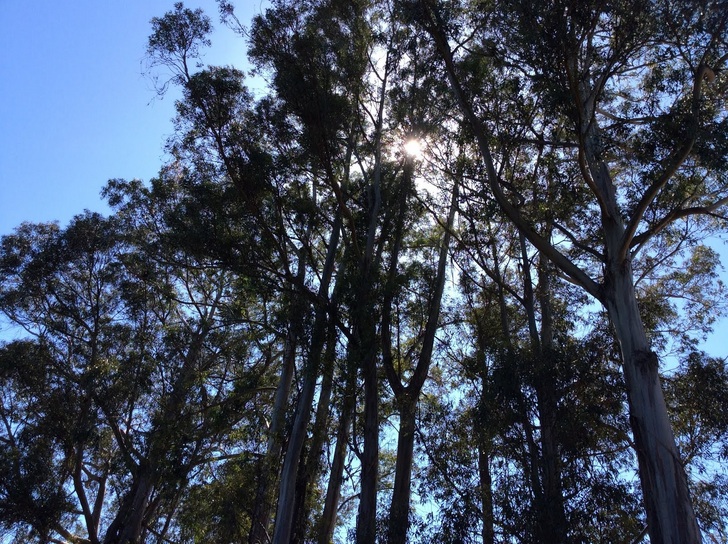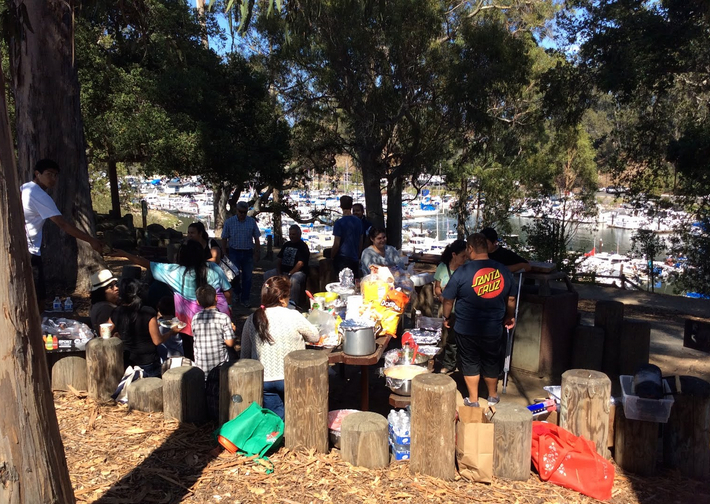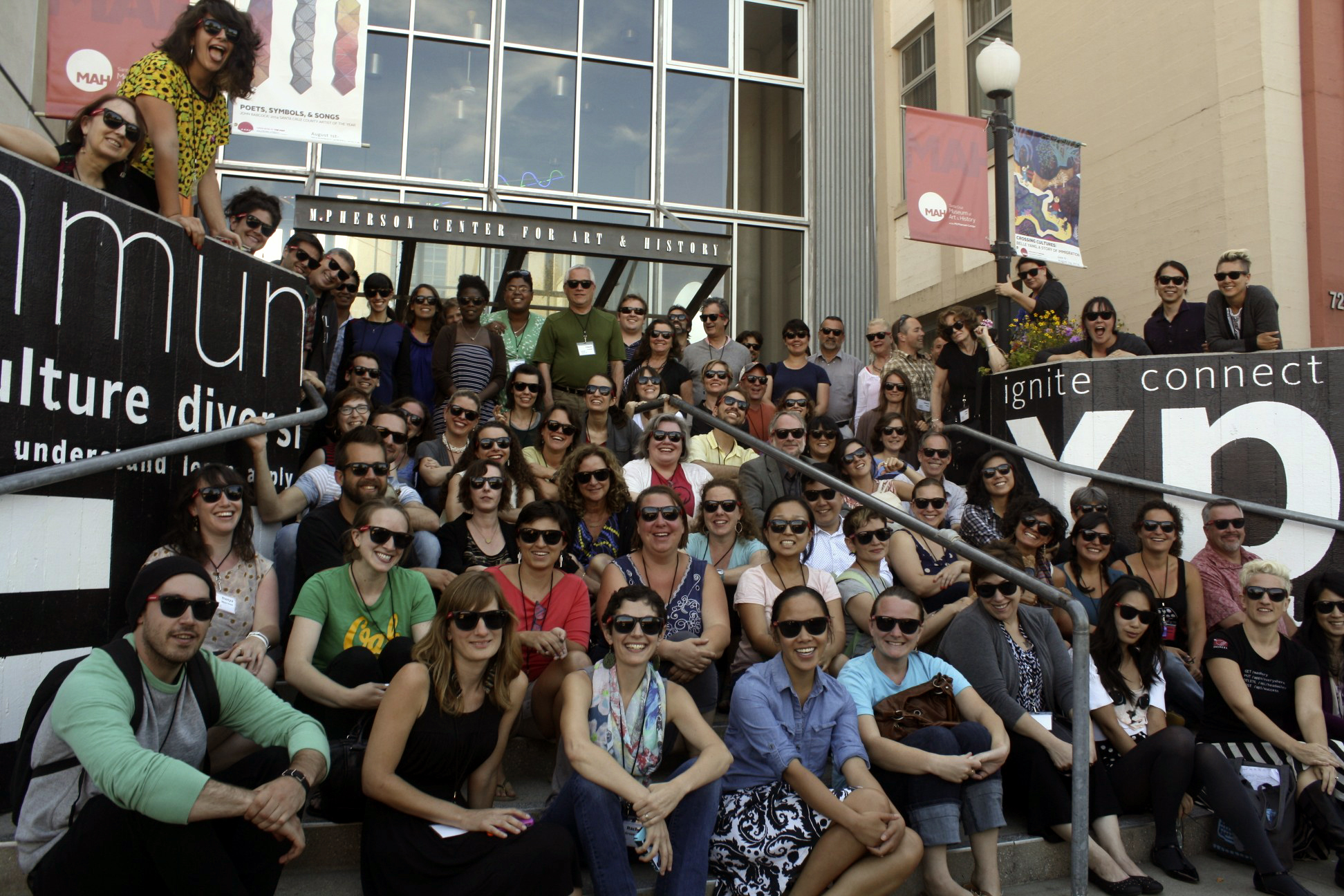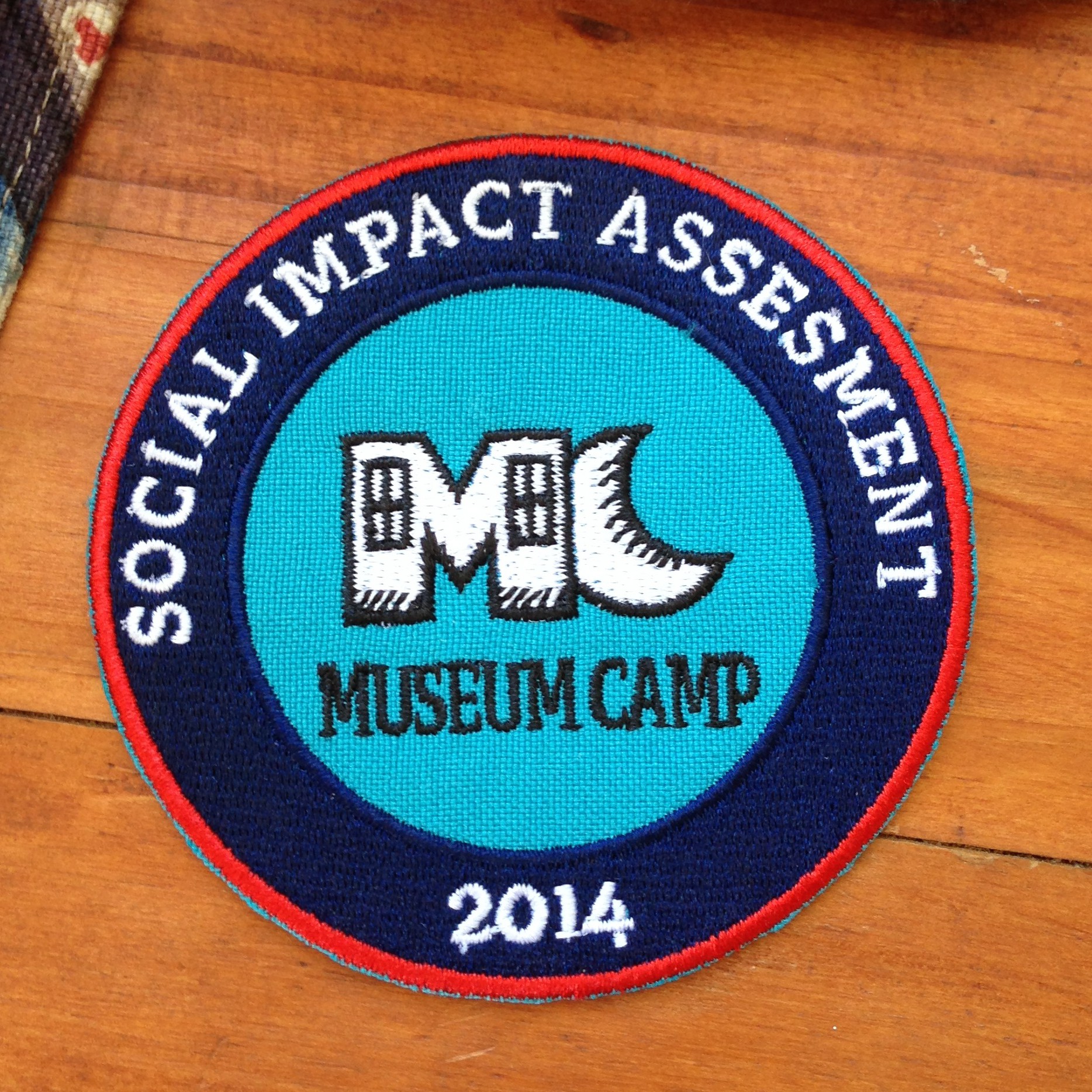I spent the last week in July in sunny California. Though I divided my time between walks on the beach, wandering the bustling boardwalk, and exploring the Santa Cruz Museum of Art & History (MAH), this was no beach vacation, but rather an intense seventy-two hours at Nina Simon’s Museum Camp 2014. Even with the itinerary, I honestly did not know what to expect as I walked up to the MAH, feeling like a true camper toting my loaded backpack and refillable water bottle attached to my purse. As a museum educator, this was a dream come true. Not only has Simon influenced the way we think about and create programs and interactives in the Center for Creative Connections (C3), but I also used her book in the literature review of my Master’s thesis. As relevant professional development can be hard to come by as a museum educator working in an interactive space, this Social Impact Assessment themed camp seemed to be what I was looking for to give me some direction in the evaluation of the C3 and specific activities within our space.
Overnight camp as an adult is a unique opportunity, so when I was offered the chance to attend Museum Camp and sleep over at the museum, I was all in. There is a special bond that is formed by spending that kind of concentrated time with a group of people. That bond is reinforced by going through certain trials and tribulations together, like searching for a comfortable spot to sleep, waking up and walking through a foggy Santa Cruz morning to the gym to take a shower, or late night revelations in the Confessional Tent. Though not all the campers opted to stay the night at the Museum, there were other opportunities for bonding, like karaoke night, mess-hall style dinners, swimming in the Pacific, and of course the fast-paced group research projects that were at the center of our camp experience.
We met our group members at the end of the first day of Museum Camp and, through a tumultuous game of White Elephant, our research locations were determined. Over the next few days we developed a research question, hypothesis, and indicators, then carried out our research and compiled our findings. The goal was to use unconventional methods of data collection to gather information regarding social impact. My group, the Metacampers, had a more sensitive location than most because we were attending a private rather than public event. The event was hosted by the Beach Flats Community Center for a small group of Latino families. Since we were all outsiders, we found it important to gather as much information as possible before engaging in our research. We visited both the community center that was hosting the event and the park where the event would take place. Yet, we still came to our project with a handful of assumptions both about the community and the location. We planned our methods so as to be as natural as possible at the event; our Spanish-speaking group members engaged in informal interviews with adult participants, our non-Spanish-speaking members made observations of both adult and youth participants, and towards the end of the gathering we asked the youths to each take a photograph of what they found most fun at the event. We expected to be greeted with some amount of skepticism, but were surprised to find the community was quite welcoming. The key to this was our Spanish-speaking group members; they were able to become ingrained in the event as participants, and holding informal interviews was a natural aspect of that.
This brings me to my biggest take-away from Museum Camp. While undertaking the research project and learning about the other groups’ methods was interesting and insightful, my biggest take-away has more to do with the idea of community. Time and again throughout camp, I was surprised by how immersed Nina Simon is in her city. Clearly, whether the camp was going on or not, Simon would have had dinner at India Joze or gone to karaoke at I Love Sushi or walked to the beach to go swimming in the Pacific. As a cultural and educational institution, connecting to the community is an important aspect of the Dallas Museum of Art’s mission. What I learned at Museum Camp is that rather than seeking to connect to the community we must be embedded in it; we must be active participants in our own communities.
If you’re interested in learning more about the Museum Camp 2014 experience, take a look at these resources from camp and reflections by other campers.
Jessica Fuentes
C3 Gallery Coordinator









1 Response to “Camp and Community”